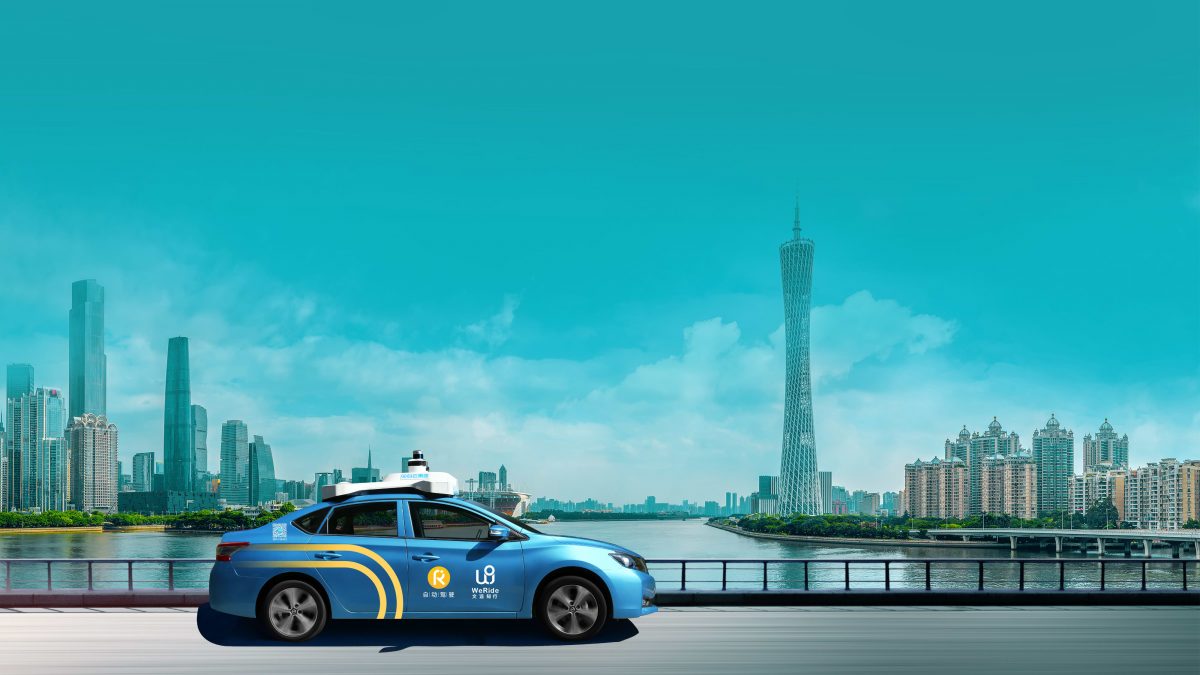GUANGZHOU, CHINA – With its rapidly evolving research and development of Level 4 self-driving cars, WeRide aims to navigate the revolution of autonomous driving vehicles, entailing state-of-the-art technology, disruptive business models and restructuring daily infrastructure (WerRide.ai, 2022). After the establishment of WeRide in 2017, the startup has launched various pilot programs, focusing on the implementation of smart technology within the vehicle industry. Remarkably, WeRide was the first in introducing a driverless Robotaxi service in China, and now also owns the largest fleet of self-driving cars among other Chinese startups (WeRide, n.d.). Next to the Robotaxi, WeRide has also introduced the Robobus for public transportation, the Robovan for delivering goods, and the Robo Street Sweeper to keep the roads clean. WeRide is responsible for integrating hardware and software within these Level 4 driverless vehicles.
Levels of autonomous vehicles are categorized into six different levels. Level 0 refers to no driving automation at all, while Level 5 refers to full driving automation. In this case, Level 4 includes the Level in which driving is highly autonomous. Human interaction is not required (Synopsis, n.d.). Level 4 depends on the integration of hardware and software within smart vehicles, enabling WeRide to generate big data, which is being used to enhance existing algorithms to ensure safety and to improve customer satisfaction. The startup offers its driverless services to consumers through an online platform, which automatically generates and processes big data as well (Gasgoo, 2022). Accordingly, WeRide is exposed to a lot of big data through the integration of hardware and software within the autonomous vehicles on the one hand and through its online platform on the other, which is eventually necessary to develop more advanced features based on improved AI algorithms.
Analysts expect the automated vehicle market to be a $72 billion industry by 2025 and a $230 billion industry by 2030 (Crider, 2022; Xuejing, 2022). Policies are becoming increasingly open, while technologies are more advanced, and costs are being limited (Xuejing, 2022). At the same time, however, some experts are being slightly skeptical. The responsiveness of robotic drivers does not exceed the responsive of human drivers. Besides, robotic drivers do not have the ability to interpret situations as clearly as human drivers do, which will possibly affect the decision-making in a negative way, and which ultimately may result in life-threatening situations (Euronews, 2022). Considering both sides, what would you do if you were provided with the opportunity to participate in this pilot? Would you go for a ride in a driverless car?
Literature
Crider, J. (2022, 6 september). Shanghai predicts autonomous cars will be a $72B industry by 2025. TESLARATI.Retreived October 2, 2022, from https://www.teslarati.com/shanghai-autonomous-cars-72b-2025/
Driverless tech companies entering fast lane with innovation. (n.d.). Chinadaily.com.cn. Retreived October 2, 2022, from https://global.chinadaily.com.cn/a/202204/29/WS626b394fa310fd2b29e5a0dc.html
Euronews. (2022, 20 september). Will self-driving cars on our roads ever be a reality? Some experts are becoming sceptical. euronews. Retreived October 2, 2022, from https://www.euronews.com/next/2022/09/20/will-self-driving-cars-on-our-roads-ever-be-a-reality-some-experts-are-becoming-sceptical
Gasgoo Awards 2022 applicant: L4 autonomous driving universal software and hardware platform from WeRide. (n.d.). Retreived October 2, 2022, from https://autonews.gasgoo.com/m/70020580.html
The 6 Levels of Vehicle Autonomy Explained | Synopsys Automotive. (n.d.). Retreived October 2, 2022, from https://www.synopsys.com/automotive/autonomous-driving-levels.html
WeRide. (n.d.). Retreived October 2, 2022, from https://cn.weride.ai
WeRide launches fully driverless Robobus service to the public. (2022, 8 januari). Medium. Retrieved October 2, 2022, from https://werideai.medium.com/weride-launches-fully-driverless-robobus-service-to-the-public-6d6bab0c0a0e
Zooming toward “golden inflection point of growth”. (n.d.). Chinadaily.com.cn. Retrieved October 2, 2022, from http://www.chinadaily.com.cn/a/202209/26/WS6330fbe0a310fd2b29e79a41.html


Really interesting analysis of autonomous vehicles in the Chinese industry. As this emerging market is still under development and testing, there are still a lot of uncertainties about it. Robo-taxis are capable of reducing traffic incidents as many accidents happen as a result of fatigue, distraction, or being under the influence of alcohol or drugs. They can also serve as a more safe transportation alternative as drivers and passengers are often exposed to harassments during rides. Though, autonomous driving come at a cost. The choices that autonomous vehicles make, are predetermined by programmers. I’m sure that you know about the famous trolley problem and that the most optimal result should be to minimize harm. But in this case the minimalization of harm is predetermined by programmers and their view and choices. This effect will definitely be noticeable and cause some riots.
I think the topic of driverless cars are fascinating and a bit scary in the same time because we are fully relying on predetermined choices. For me personally, I would like participate in a pilot project, but maybe start with short distance rides.
Very insightful post Fiona! Although I have my doubts about the practical use of autonomous cars, the technology and innovation is very intriguing to me! I think that the biggest problem of autonomous driving could be that people will become lazy while driving and depend too much on the autopilot function, which could result in more life-threatening situations, if the autopilot function experiences an error. But only the future will tell how practical the autonomous driving will be!